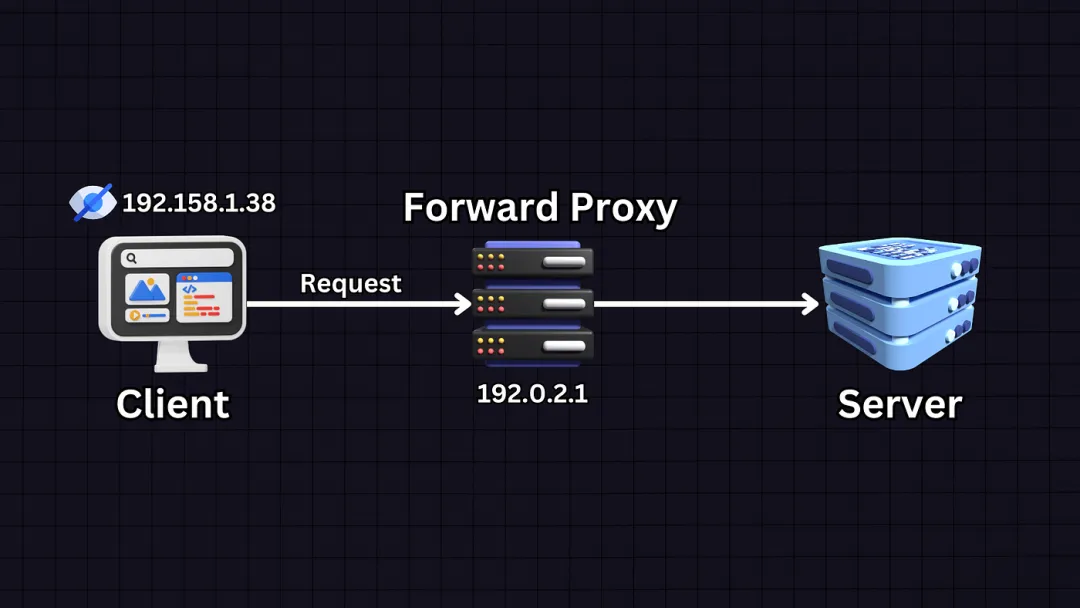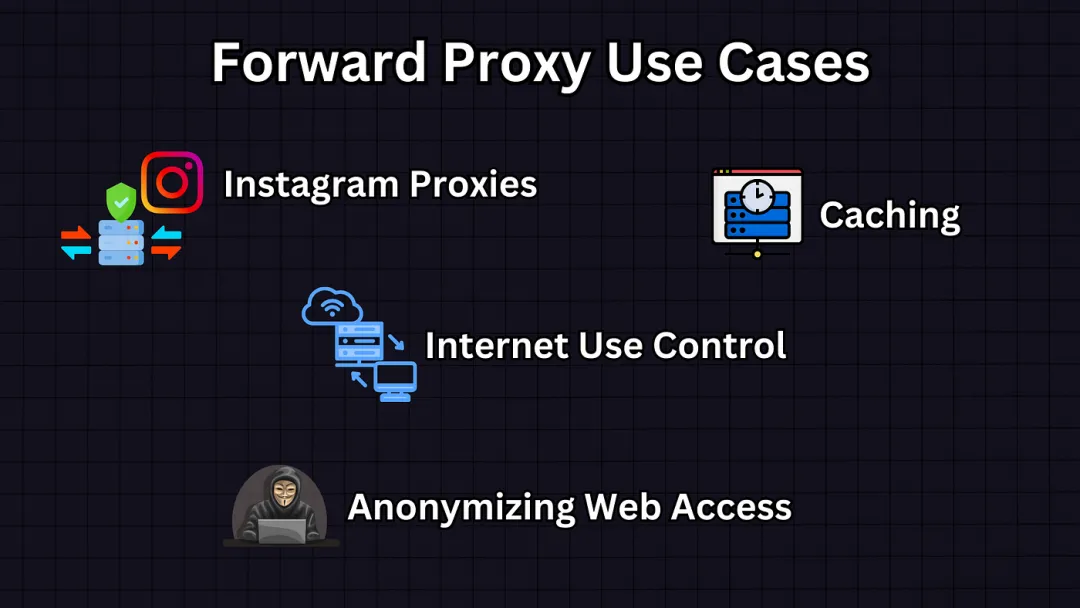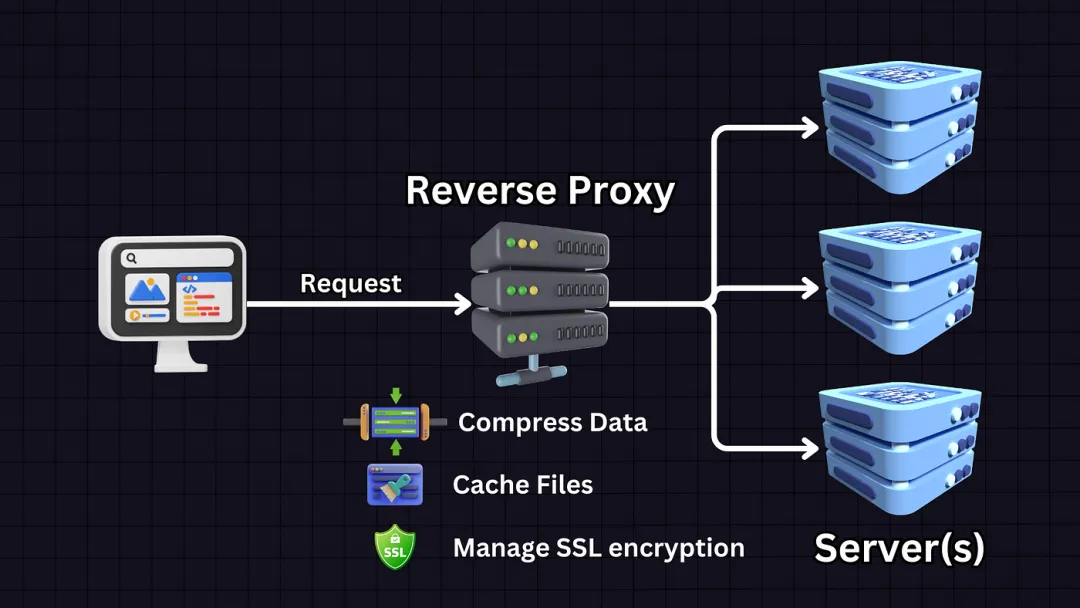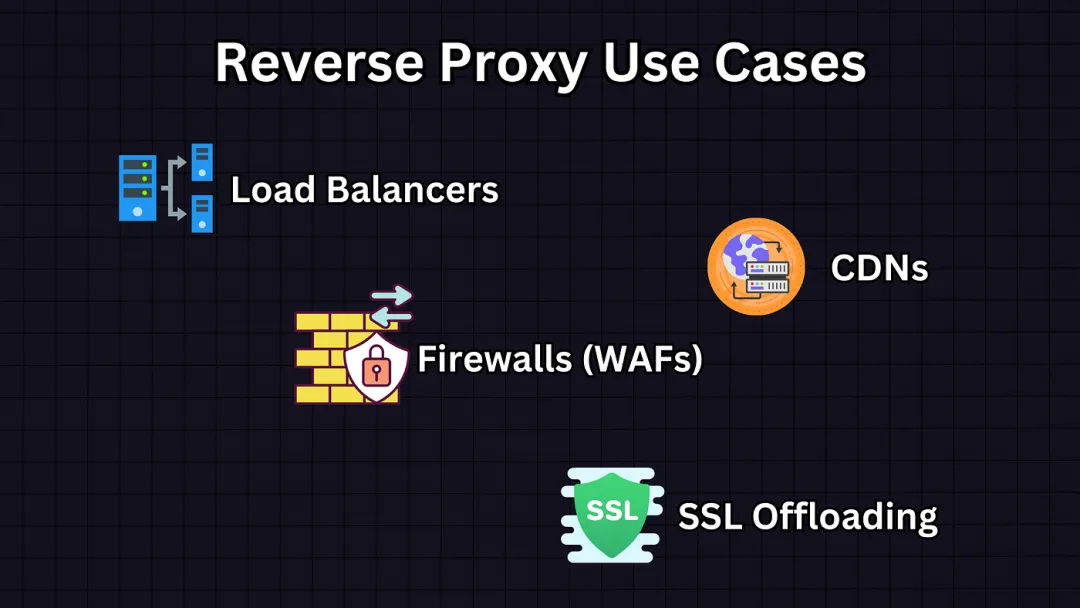Proxy servers: How proxies work

A proxy server acts as an intermediary between the client requesting the resource and the server providing the resource. It enables a variety of functions, such as caching resources for faster access, anonymizing requests, enforcing security policies, and load balancing across multiple servers.
In simple terms, a proxy server receives a request from a client, forwards it to the relevant server, and then returns the server's response to the client.
The type of proxy server
There are various types of proxy servers, each with a different purpose. Here's an introduction to the main types:
(1) Forward Agent Proxy) is located in front of the client and is used to send requests to other servers on the Internet. It can provide anonymity and is often used in internal networks to control internet access.
(2) A reverse proxy is located on one or more websites In front of the server, intercept requests from the Internet. It is mainly used for load balancing, network acceleration, and as a protective layer for security and anonymity.
(3) Open Proxy allows users to connect to and use proxy servers, which are commonly used for anonymous browsing and bypassing content restrictions.
(4) Transparent Proxies do not modify requests and responses when forwarding them, but are visible to clients. Commonly used for caching and content filtering.
(5) Anonymous Proxy can be identified as a proxy server, but does not reveal the original IP address. For anonymous browsing.
(6) Distorting Proxies provide the wrong original IP address to the target server, similar to anonymous proxies, but deliberately provide false IP information.
(7) Elite Proxy is difficult to detect as a proxy server. These proxies don't send X-Forwarded-For or other identification headers for maximum anonymity.
The most commonly used proxy types are Forward Proxy and Reverse Proxy.
Forward Proxy
Forward proxies are the middle layer between the client and the server. It sits between a client, such as a computer in an internal network, and an external server, such as an internet website.
When a client makes a request, the request is first sent to the forward proxy. Agents decide whether to allow, modify, or block requests based on their configuration and rules.

One of the main functions of a forward proxy is to hide the client's IP address. When it forwards the request to the destination server, the destination server thinks that the request is coming from the proxy server itself.
This provides users with a level of anonymity and is particularly good for privacy protection or bypassing IP-based restrictions or surveillance.
Scenarios for which forward proxies are used

(1) Instagram Private Proxies This is a specific type of forward proxy that is used to manage multiple Instagram accounts without triggering bans or restrictions. Marketers, social media managers, and influencers use Instagram Proxies to disguise themselves as located in different regions or different users in order to manage multiple accounts, automate tasks, or collect data without being flagged for suspicious activity.
(2) Internet Use Control and Monitoring Organizations use forward proxies to monitor and control employees' Internet use, block access to non-work-related websites, ensure compliance with organizational policies, and protect the network from web-based threats.
(3) Caching of commonly used content Forward proxies can also cache frequently accessed content, which means that when multiple users request the same content, the proxy can serve content directly from its cache instead of getting it from an external server every time, improving loading speed and reducing bandwidth consumption. This is especially beneficial for networks with expensive or limited bandwidth.
(4) Anonymizing Web Access Individuals with privacy concerns can use forward proxies to hide their IP addresses and other identifying information, making it difficult for websites to track their browsing activity.
Reverse proxies
A reverse proxy is a proxy server that sits in front of one or more web servers and intercepts a client's request before it reaches the server.
Unlike forward proxies that hide the identity of the client, reverse proxies actually hide the identity of the server or the presence of multiple servers behind it. The client only interacts with the reverse proxy and may not be aware of the existence of the backend server.

It distributes client requests across multiple servers, enabling load balancing and ensuring that no single server is overloaded. This is critical for maintaining high availability and reliability.
In addition, reverse proxies can compress incoming and outgoing data, cache files, and manage SSL encryption to speed up load times and reduce server load.
From the client's point of view, it appears that they are communicating directly with the target server. The client sends a request to a specific web address, and the reverse proxy forwards the request to the appropriate backend server.
A classic example of a reverse proxy

(1) Load Balancers distribute incoming network traffic to multiple servers, ensuring that no single server is overloaded and preventing any server from becoming a bottleneck. A load balancer can be thought of as a type of reverse proxy designed for inter-server load distribution.
(2) Content Delivery Network (CDN) A CDN is a network of servers that serves cached static content based on the user's geographic location. They act as reverse proxies, fetching content from the origin server and caching it so that it is closer to the user, allowing for faster delivery.
(3) Web Application Firewall (WAF) The WAF sits in front of the web application and inspects incoming traffic to block hackers and filter bad traffic while protecting the application from common web vulnerabilities.
(4) SSL Offload/Acceleration Some reverse proxies handle the encryption and decryption of SSL/TLS traffic, offloading this task from the web server to optimize performance.